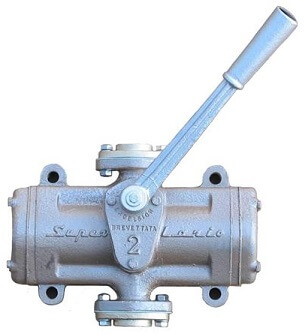Hand Pump Troubleshooting Guide
Hand Pump Troubleshooting Guide
 If you are experiencing issues with your Hand Pump, the below guide can help you diagnose any issues, or speak to one of our Technical Sales Engineers for further assistance:
If you are experiencing issues with your Hand Pump, the below guide can help you diagnose any issues, or speak to one of our Technical Sales Engineers for further assistance:
Problem | Possible Cause | Remedy |
Low Flow | Incorrect position | Certain models have internal valves and springs which rely on gravity for sealing – models E000, E3, E4, E5 & E7 and must be installed vertically to work correctly |
Cycles Not Frequent Enough | Increase number of complete cycles / pump strokes. May need to change pump to double acting rather than single acting. Flow rate is proportional to revolutions per minute | |
Viscosity of Fluid | Performance is based on fresh water at room temperature. Please check viscosity. Increase pipe diameter | |
Damaged Parts | Use of excessive force or incorrect use has caused damage to pump internals | |
Worn Valves | If hand pump is installed vertically (180° position), the weight of fluid on valves may cause them to open fully when not in use but also wear prematurely | |
Inlet pipe too Small | Increase Pipe Diameter | |
Discharge piping length | Shorten discharge pipework | |
Low Pressure | Incorrect position | Certain models have internal valves and springs which rely on gravity for sealing – models E000, E3, E4, E5 & E7 and must be installed vertically to work correctly |
Suction Distance | Suction distance is too far | |
Discharge Pipework | Discharge pipework is too long | |
Inlet pipe too Small | Increase Pipe Diameter | |
Viscosity of Fluid | Performance is based on fresh water at room temperature. Please check viscosity | |
Cycles Not Frequent Enough | Increase number of complete cycles / pump strokes at 45° angles either side of pump or full rotary motion. May need to change pump to double acting rather than single acting. Flow rate is proportional to revolutions per minute | |
Worn Valves | If hand pump is installed vertically (180° position), the weight of fluid on valves may cause them to open fully when not in use but also wear prematurely | |
Pump Model | May need to switch to diaphragm or piston pump type for greater pressure | |
Pump Not Priming | Incorrect position | Certain models have internal valves and springs which rely on gravity for sealing – models E000, E3, E4, E5 & E7 and must be installed vertically to work correctly |
Foot Valve | Certain pumps require a foot valve for operation, but for suction lifts of up to 2M normally one is not required. | |
Particle Ingress | There is a wing inside pumps which flicks between suction and discharge. This can become jammed with particles. | |
Worn Parts | Check connections and seals for wear | |
Damaged Parts | Use of excessive force or incorrect use has caused damage to pump internals | |
Air Ingress | Check suction pipework is air tight. Cheaper hand pumps rely on PTFE tape between joints which should be avoided as it can enter the pump. Ensure hydraulic seal on container, counter flanges, suction tube, hose, nozzle and flowmeters is airtight. | |
Chemical Attack | Check fluid concentration, and temperature for chemical compatibility with all materials in the pump | |
Fluid Level | Fluid Level in tank is too Low | |
Hose Collapsing | Hose must be rigid and not collapse | |
Suction Tube Sticking to Container | Ensure suction tube has been cut at an angle to prevent vacuum suction to bottom of container | |
Pump Noisy or Rough in Movement | Lubrication | Lubricate internal mechanism |
Rust (Oxide film) | If cast iron pumps are used with fresh water ensure they are drained after use. | |
ICE in pump | Ensure pump is drained after used if exposed to temperatures below 0°C | |
Particle Ingress | Check strainer on pump and ensure working correctly. Clean pump internals. | |
Infrequent Use | Ensure pump is used periodically, or emptied, lubricated and kept in a dry place. |





